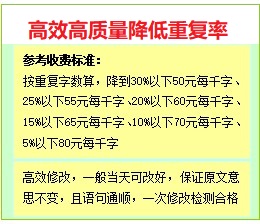基于 MATLAB 的二自由度汽车稳定性研究
本文有带图的PDF版本,需要可联系本站客服QQ893628136
摘要
随着汽车工业的发展,现代汽车的时速不断提高。因而,在汽车研究和设计
时考虑汽车空气动力特征变得越来越重要。 而考虑空气动力特征对车辆行驶的影
响,特别对操纵稳定性的影响尤其重要。在新车设计时,利用计算机对车辆的操
纵稳定性进行模拟, 可以为设计者提供许多重要的数据和信息。 随着研究的深入,
仿真可成为车辆的其它性能研究的重要手段。
文档首先考虑了轮胎的非线性特性对汽车的转向特性与行驶稳定性的重要
影响,采用非线性轮胎模型(魔术公式) ,在此基础上建立了二自由度四轮汽车
模型及汽车参考模型。 从理论上研究了汽车稳定性控制的基本原理, 包括轮胎的
侧偏特性对操纵稳定性的影响,转向角、车速对汽车操纵稳定性的影响,并利用
MATLAB 对这些因素进行仿真分析。
关键字:汽车 稳定性 仿真 MATLAB
ABSTRACT
With the development of the modern automobile industry,the vehicle velocity has
being promoted continuously. So considering the influence of the aerodynamics on
vehicle has become more important in vehicle research and design. And the influence
on vehicle driving stability is one of the important influences. Computer aided simul-
ation on vehicle driving stability can provide designer much important date and useful
information. And with the research going on,simulation can be used on other aspects
of vehicle performance,will be an important means in vehicle design and research.
The important influence of nonlinear characteristics of tire on cornering
characteristics and driving stability of vehiclewas consideredat first. Thenonlinear
tire model (Magic Formula) was adopted, and the four wheels vehiclemodel with two
degrees of freedom and vehicle reference model were set up on this basis. The basic
principles of vehicle stability control were researched theoretically. Including the
influenceof slip characteristics of tire on vehicle stability,and the influenceof road
surface state, steer angle and vehicle on vehicle stability. And use the MATLAB for
simulation analysis of thesefactors.
Key words : Automobile Stability Simulation MATLAB
目录
摘要................................................................ I
ABSTRACT........................................................... II
目录.............................................................. III
第一章 绪论........................................................ 1
1.1 汽车操纵稳定性研究的必要性................................... 1
1.2 汽车操纵稳定性理论研究的概况................................ 4
1.3 本文的研究目的及意义......................................... 5
1.4 本文研究的主要内容........................................... 5
第二章 汽车稳定性控制动力学模型.................................... 7
2.1 轮胎的受力及运动状态......................................... 7
2.1.1 轮胎的坐标系........................................... 7
2.1.2 侧偏力、回正力矩与侧偏角的关系......................... 8
2.1.3 侧偏力和回正力矩的发生机理............................. 9
2.1.4 轮胎的运动状态........................................ 10
2.1.5 轮胎动力学特性的影响因素.............................. 11
2.2 轮胎模型(魔术公式)......................................... 11
2.3 二自由度汽车模型............................................ 14
2.4 本章小结.................................................... 17
第三章 汽车稳定性主要影响参数和评价指标............................ 18
3.1 汽车的稳定性及影响因素...................................... 18
3.2 汽车操纵稳定性评价指标...................................... 19
3.3 本章小结.................................................... 23
第四章 转弯工况汽车动力学稳定性仿真分析............................ 24
4.1 轮胎的侧偏特性仿真分析..................................... 24
4.2 汽车动力学稳定性仿真分析................................... 28
4.3 本章小结.................................................... 35
第五章 结论........................................................ 36
致 谢............................................................. 37
参考文献........................................................... 38
第一章
绪论
1.1 汽车操纵稳定性研究的必要性
汽车操纵纵稳定性的研究, 是与汽车车速的不断提高分不开的。 早期的低速
汽车,还谈不上操纵稳定性问题,最早提出操纵稳定性问题,是针对具有较高车
速的赛车。后来,随着车速的不断提髙,在轿车、大客车和载重车上也都不同程
度的出现了类似的问题。司机觉得操纵稳定性不好的汽车,通常有如下的表现:
(1)“飘”。有时司机并未发出转向指令,而汽车自己不断改变行驶的方向,使
人感到飘浮。
(2)“贼”。有时汽车就像受惊的马,突然的忽东忽西,不听司机的操纵。
(3)“反应迟钝”。司机转向指令己发出相当时间,汽车还没有转向反应,或转
向过程完成的过慢。
(4)“晃”。司机给出稳定的转向指令,但汽车却左右摇摆,行驶方向难于稳定。
这样的汽车在受到路面不平或突然阵风的扰动时,也会出现这种摇摆。
(5)“丧失路感”。正常汽车的转弯的程度,会通过方向盘在司机手上产生相应
的感觉。 有些操纵稳定性能不好的汽车, 特别是在车速较高或转向较剧时会丧失
这种感觉。
(6)“失去控制”。某些汽车在车速超过一个临界值之后或向心加速度超过定值
之后, 司机已经完全不能控制汽车的行驶方向。 可能司机向左打方向而汽车却产
生向右的转向。
上面只是列举了几种基本现象, 操纵稳定性不好的汽车不一定同时具有以上
表现。
最初,人们设计汽车的转向系统所依据的原理如图1-1所示,按照这种原理,
汽车的转弯半径R与前轮转角S及轴距L之间存在以下关系
R=L/tgs
(1-1)
这种原理,至今仍是设计汽车转向系统的基本依据。但是,这种原理只能得
出汽车的转弯半径完全取决于前轮转角的结论。 式(1-1)说明: 一定汽车的转弯半


